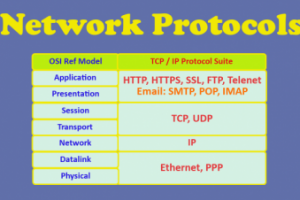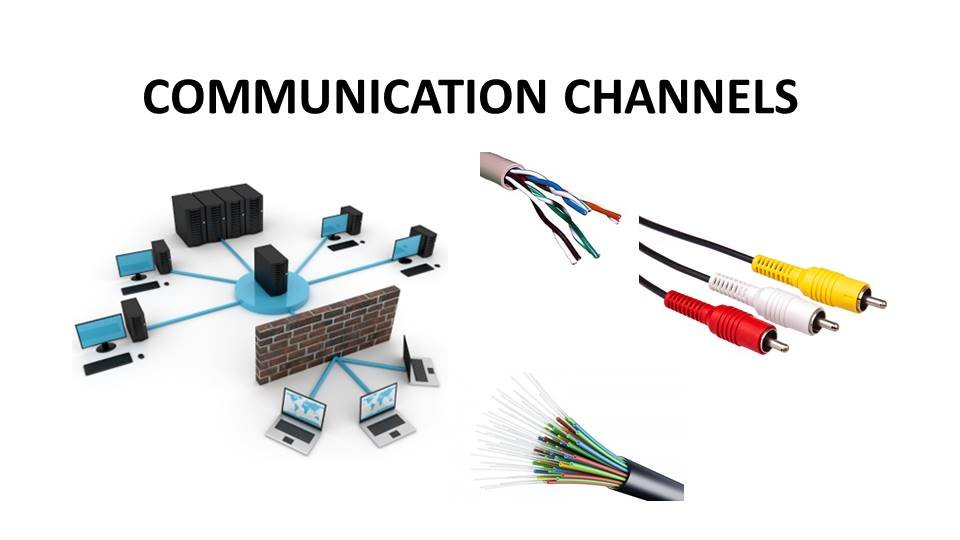
Communication Channels
- Categories Computer Networks, Computer Networks
In this post, we are going to learn about communication channels which are used in computer networks.
We know a computer network is a group of computers linked to each other that enables the computers to communicate with each other and share their resources, data, and applications.
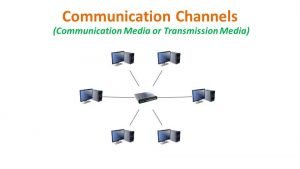
These computers are linked to each other with different types of communication channels.
These communication channels are also known as communication media or transmission media and it is a path that connects the sender and receiver for transmission of information over a network.
At a broad level the communication channels are divided into two types:
- Guided Media
- Unguided media.

Guided media is also known as wired or bounded media because the data signals are enclosed in a cabling media. In guided media, the communication devices are directly connected with each other via wires or physical media for data transmission. E.g. twisted pair cables, coaxial cables and fibre optics.
Unguided media is also known as wireless media. It can also be used at each and every place where it is impossible to install cables. Here electromagnetic waves of different frequencies are used. Some examples of unguided media are Microwave System, Communication Satellite, Broadcast Radio, Cellular Radio and Infrared.
Guided media
Twisted Pair Wire:

Characteristics:
- The data transmission speed is between 10mbps to 10gbps
- It is most popular and is used as communication media in LAN and Local telephone lines
- It can carry voice and data signals
- Signals are transmitted using pairs copper wires which are insulated by plastic that have been physically twisted together
- The wires are twisted together in order to reduce noise. The electrical disturbance that can degrade the communications is called noise.
- It is of two types, Unshielded Twisted Pair(UTP) and Shielded Twisted Pair (STP).
- Twisted pair is comparatively inexpensive and easy to install and maintain.
Its disadvantages are:
- It is unsuitable for long distance
- Its speed is less than coaxial cable or fibre optics.
Coaxial Cables:

It is also termed as coax.
Characteristics:
- The data transmission speed is around 10 to 100mbps
- It is used for video transmissions for televisions or for long-distance telephone lines and LANs for voice and data transmission with very high frequency
- It is made up of a single solid copper wire core that is covered by insulating material.
- A copper mesh is used to cover the insulated copper wire. It also protects the cable from noise such as electromagnetic waves.
- It can carry both analog and digital signals.
- It carries high-frequency range signals with bandwidth 80 times higher than the twisted-pair wire.
- IT is of two types, thicknet and thinnet.
Its disadvantages are:
- It is more expensive than twisted pair
- Not compatible with twisted pair cables.
Fibre optics

It is used for:
- The data transmission speed is more than 100gbps+/ 2GBPS
- Internet or long distance communication.
- Here Digital signals are sent as light pulses which are translated back into electrical signals
- It has a Fine glass strand surrounded by glass cladding and protective layer
- Glass cladding reflects light back into the core, guiding the light along the wire
- Thousands of transmissions can be carried on a single strand
- It is secure and has very low signal loss.
Its disadvantages are:
- It is very expensive and also difficult to install and modify.
- It is difficult to repair and one fault can bring down the entire network.
Unguided Media
It is also known as wireless media. It can also be used at each and every place where it is impossible to install cables. Here electromagnetic waves of different frequencies are used. Some examples of unguided media are Microwave System, Communication Satellite, Broadcast Radio, Cellular Radio and Infrared.
Lets look at each one of them:
Microwaves
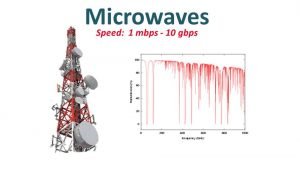
Characteristics:
- The data transmission speed is between 1mbps to 10gbps
- It is used for high speed transmission
- Information is sent via microwaves from ground based transmitting and receiving stations
- Text, sound, and graphics are converted into microwave pulses and transmitted
- Microwave stations (a.k.a. repeater stations) must be placed every 50 kilometers to receive, amplify, and then pass the signal along
Its disadvantages are:
- It cannot pass through obstacles and can only use line of sight transmission. That’s why the stations are installed on tall towers and buildings.
- It also supports limited bandwidth.
Broadcast radio
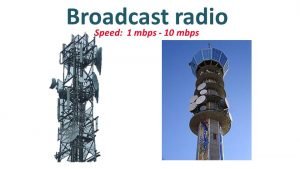
Characteristics:
- The data transmission speed is between 1 MBPS to 10 MBPS
- It is used for cordless phones, AM & FM radio transmission for both voice and data.
- It can travel over long distances and penetrates buildings easily.
- Radio transmission requires a transmitter to send broadcast radio signals and a receiver to receive it. The receiver uses an antenna to receive the signals.
- An example of the short-range broadcast radio communications is Bluetooth, which is used in computers, mobiles, printers etc.
- It uses short-range radio waves to transmit data at a rate of 1 MBPS among Bluetooth enabled devices
Its disadvantages are:
- It is unidirectional and insecure means of communication.
- And has multipath interference such as reflections from water and land bodies.
Cellular Radio
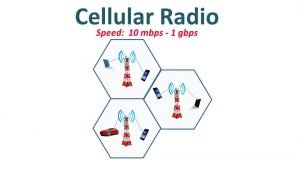
Characteristics:
- With 4G The data transmission speed is between 10mbps to 1gbps
- It is specifically used in wireless modems and cellular telephones.
- The cellular telephone is also a telephone device that uses high-frequency radio waves to transmit voice and digital data.
- However, some mobile users connect notebooks or mobile computers to the cellular telephone to access the Web or send and receive the email, etc. Personal Communications Services (PCS) is a set of technologies used for digital cellular devices like Handheld computers, cellular telephones, etc.
Its disadvantages are:
- It requires complex infrastructure
- And a well planned frequency spectrum distribution
Satellite Communication
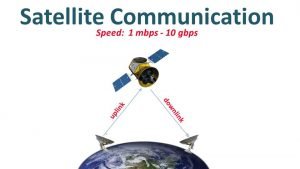
Characteristics:
- Is used for global mobile communication, Satellites are placed in space and they orbit the earth.
- It receives microwave signals from the earth station.
- Communication satellites magnify the signals and retransmit them back to earth.
- The data transfer speed of the communication satellite is very high and it avoids the cost of cabling and repeater stations.
- The transmission from the earth station to a satellite is called uplink. The transmission from the satellite to the earth station is called the downlink.
Its disadvantages are:
- It is expensive and not easy to repair and maintain
- Weather and sunspots can also cause signal disturbance.
Infrared (IR) wireless transmission media

Characteristics:
- It gets speed up to 1GBPS
- It is used in remote controls for televisions, optical mouse and most other entertainment devices.
- It sends signals using infrared light wave that is invisible to us and is just above the red end of the colour spectrum.
- Works over a moderate bandwidth 115 kbps and works up to 10 meters.
- IrDA port is normally fixed in mouse, printer, and digital camera in order to enable them to transfer data from one device to another using infrared light waves.
- It is also an alternative to short-range raid communication like Bluetooth.
Its disadvantages are:
- It has short range and low bandwidth and
- It requires a light of sight transmission.
You may also like
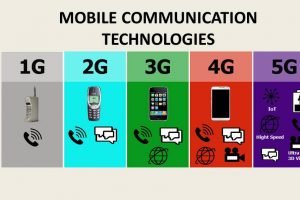
Mobile Telecommunication Technologies
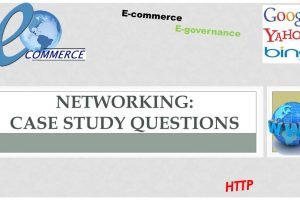
Computer Networking: Case Study Questions
